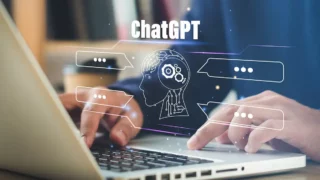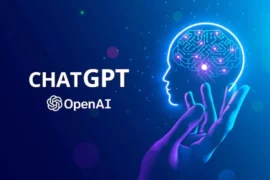ChatGPT Detector: OpenAI’s New AI Text Classifier Tool

OpenAI, the company behind the popular GPT-3 and GPT-4 AI models and ChatGPT website, has released a tool to help people detect text written by ChatGPT and other artificial intelligence. To use the tool, simply paste the text in, click submit, and in return get a classification such as AI-Generated, Human-Written, etc.
To have some fun, I visited the tool’s webpage and copied the text on the page. Next, I pasted the text into ChatGPT and asked it to rewrite the text in its own words and in a humorous tone. ChatGPT produced the following article.
The AI Text Classifier Tool From OpenAI
Do you struggle to distinguish between human-written and AI-generated text? Fear not, for the AI Text Classifier is here to help. This tool, based on a fine-tuned GPT model, predicts the likelihood that a piece of text was generated by AI, from sources like ChatGPT.
But hold your horses, cowboys! Don’t go blindly trusting this classifier just yet. It comes with its fair share of limitations. Firstly, it requires a minimum of 1,000 characters, which is roughly 150-250 words. Secondly, it isn’t always accurate and can mislabel both AI-generated and human-written text. So, if you’re trying to sneak some AI-generated text past your teacher, you might still get caught. Thirdly, AI-generated text can be edited easily to avoid detection by the classifier. And finally, it’s not perfect at detecting AI-generated text written by children or text not in English.
Despite these limitations, the classifier is available for free, and it’s a great tool for sparking discussions about AI literacy. Just be sure you have the appropriate rights to the text you’re pasting. The classifier labels each document as either very unlikely, unlikely, unclear if it is, possibly, or likely AI-generated.
How to Interpret the Results of The Classifier
Now, how do you interpret the results from the classifier? Well, the intention behind the AI Text Classifier is to foster conversation about the distinction between human-written and AI-generated content. So, the results may help, but they shouldn’t be the sole piece of evidence when deciding whether a document was generated with AI. The model is trained on human-written text from a variety of sources, which may not be representative of all kinds of human-written text.
If you’re wondering how effectively the classifier detects documents co-written with AI, the truth is we have not thoroughly assessed its effectiveness in detecting content written in collaboration with human authors.
Give Us Feedback
If you have any feedback, concerns, or questions about the classifier, you can reach out to the help center or fill out a form. However, the model card for the AI Text Classifier is available below, and the model weights are not being released at this time.
In Summary
While the AI Text Classifier is a useful tool for detecting AI-generated text, it’s not foolproof. It’s up to you to interpret the results and use them as one factor out of many when determining the source of a piece of content. So, use it wisely and don’t rely on it too heavily, or you might find yourself in hot water.
The Classification Result
I pasted the above article into the AI Text Classifier Tool (minus the first two paragraphs I wrote) and it returned that it was possibly AI-generated. It was in reality 100% AI-generated.

I’m sure the tool will get much better over time, if not near-perfect. I’ve been playing around with it a decent amount and as you would expect, it returns correct and not-so-correct classifications. Like all cutting edge AI, it’s a work in progress.







